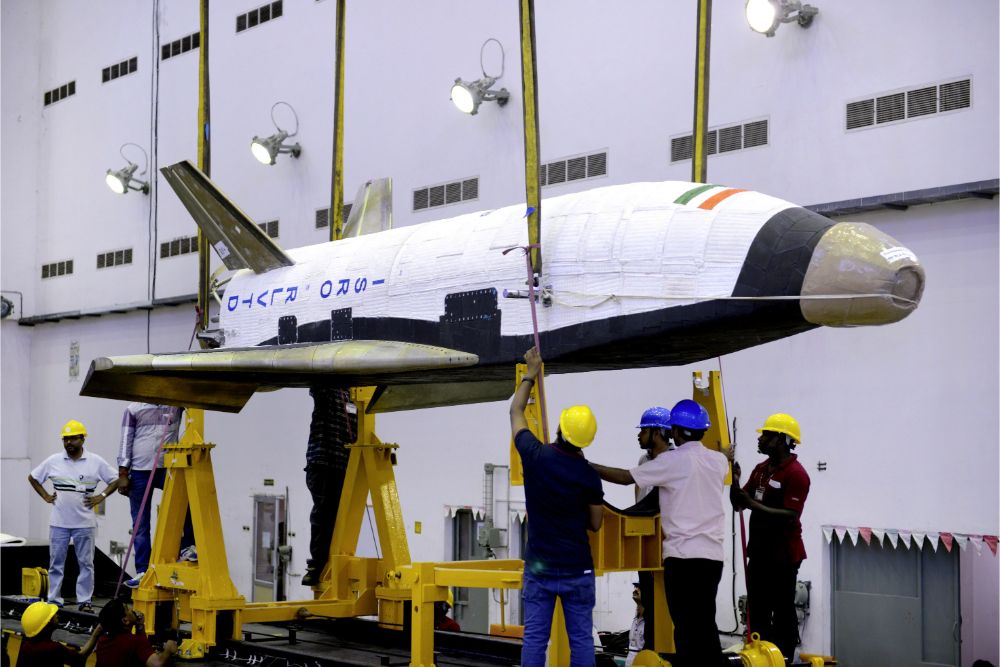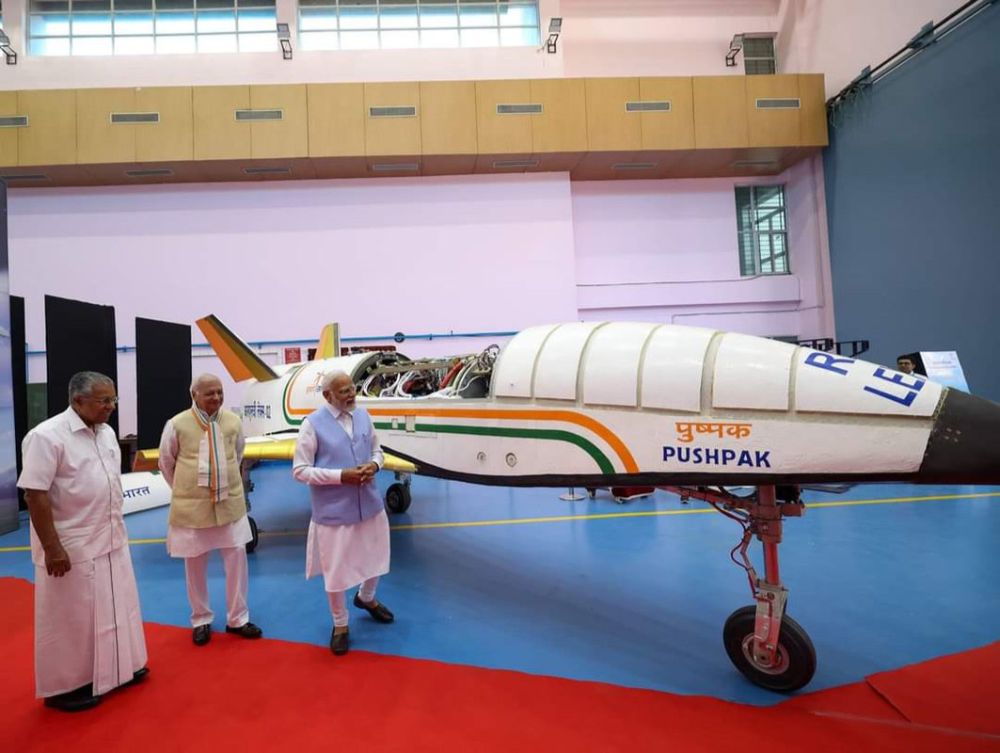In yet another triumph for the Indian Space Research Organisation (Isro), the Reusable Launch Vehicle (RLV) dubbed ‘Pushpak’ executed its landing mission flawlessly at the Aeronautical Test Range (ATR) in Challakere, near Karnataka’s Chitradurga. Isro Chairman S Somanath, along with other senior officials, witnessed the historic event firsthand.

Isro hailed the achievement, stating, “Isro nails it again! Pushpak (RLV-TD), the winged vehicle, landed autonomously with precision on the runway after being released from an off-nominal position.”
The launch of Pushpak signifies India’s ambitious step towards revolutionising space access, making it more affordable and sustainable.
Pushpak was hoisted by an Indian Airforce Chinook helicopter and released from an altitude of 4.5 km. Demonstrating its autonomous capabilities, Pushpak autonomously navigated towards the runway, making cross-range corrections along the way. It executed a precise landing on the runway, employing its brake parachute, landing gear brakes, and nose wheel steering system to come to a halt.

Designed as a fully reusable single-stage-to-orbit (SSTO) vehicle, Pushpak incorporates elements from various advanced technology demonstrators, including the X-33, X-34, and DC-XA.
This launch marks the third successful flight of Pushpak, signifying significant progress in perfecting its robotic landing capabilities under increasingly complex conditions.
Named after the mythical ‘Pushpak Viman’ from the Ramayana, Isro’s Pushpak embodies prosperity and innovation, showcasing India’s prowess in space technology.
The winged technology demonstrator RLV serves as a flying test bed for evaluating hypersonic flight, autonomous landing, and powered cruise flight technologies.
With an investment exceeding Rs 100 crore, Pushpak not only highlights India’s technological advancements but also sets the stage for future endeavours, including the establishment of the Bhartiya Antriksh Station by 2035.

During a recent visit to the Vikram Sarabhai Space Centre, Prime Minister Narendra Modi was briefed by Chairman Somanath about the vehicle’s development.
Isro’s RLV spacecraft design was approved in January 2012, leading to the creation of the first prototype named RLV-TD. With advanced simulations and heat-resistant materials developed by the National Aerospace Laboratory and the Defence Research and Development Organisation (DRDO), the RLV embarked on its maiden flight in 2016.
Isro’s successful landing mission underscores India’s commitment to advancing space exploration and technology, paving the way for future space endeavours on both national and global scales.
